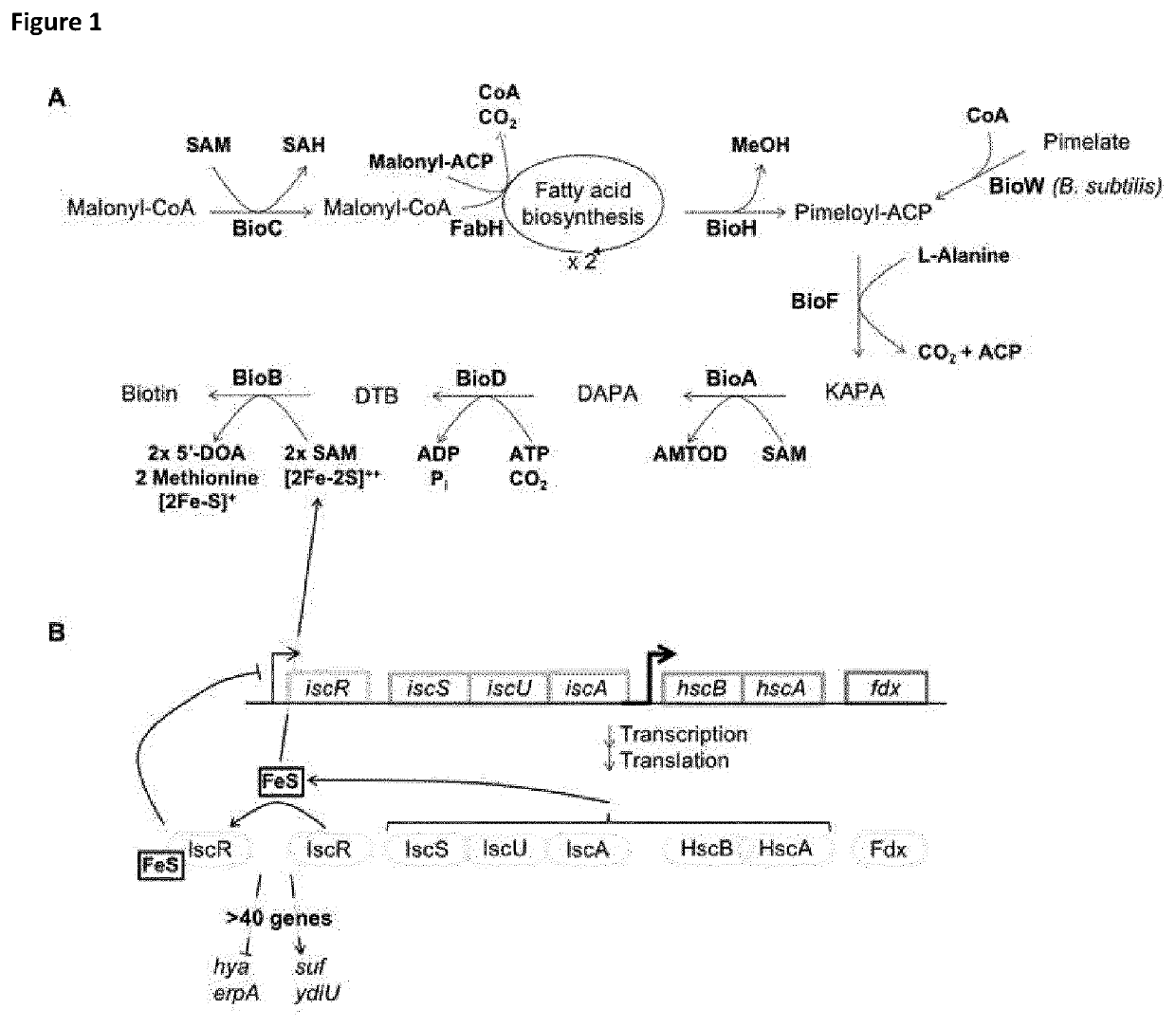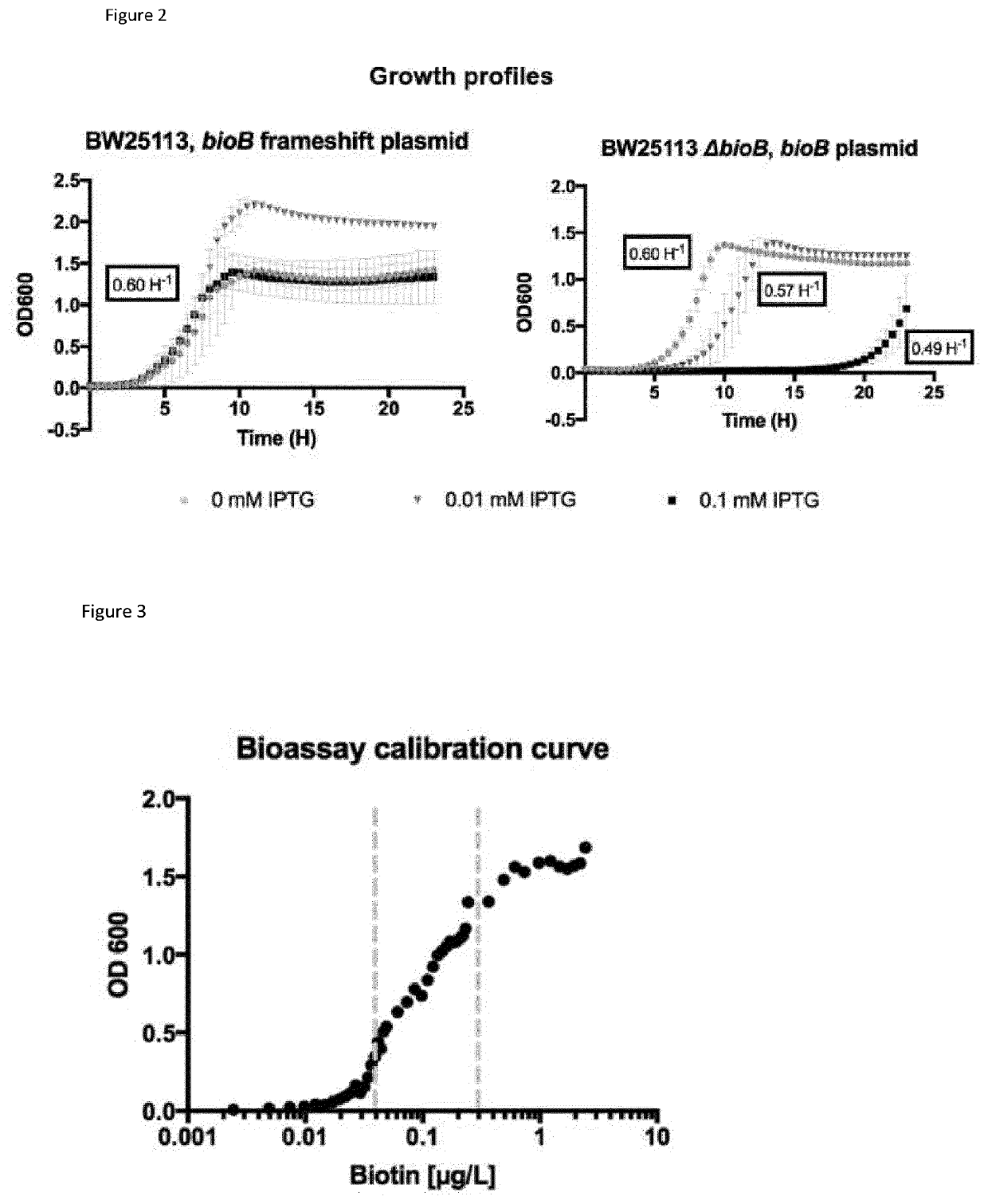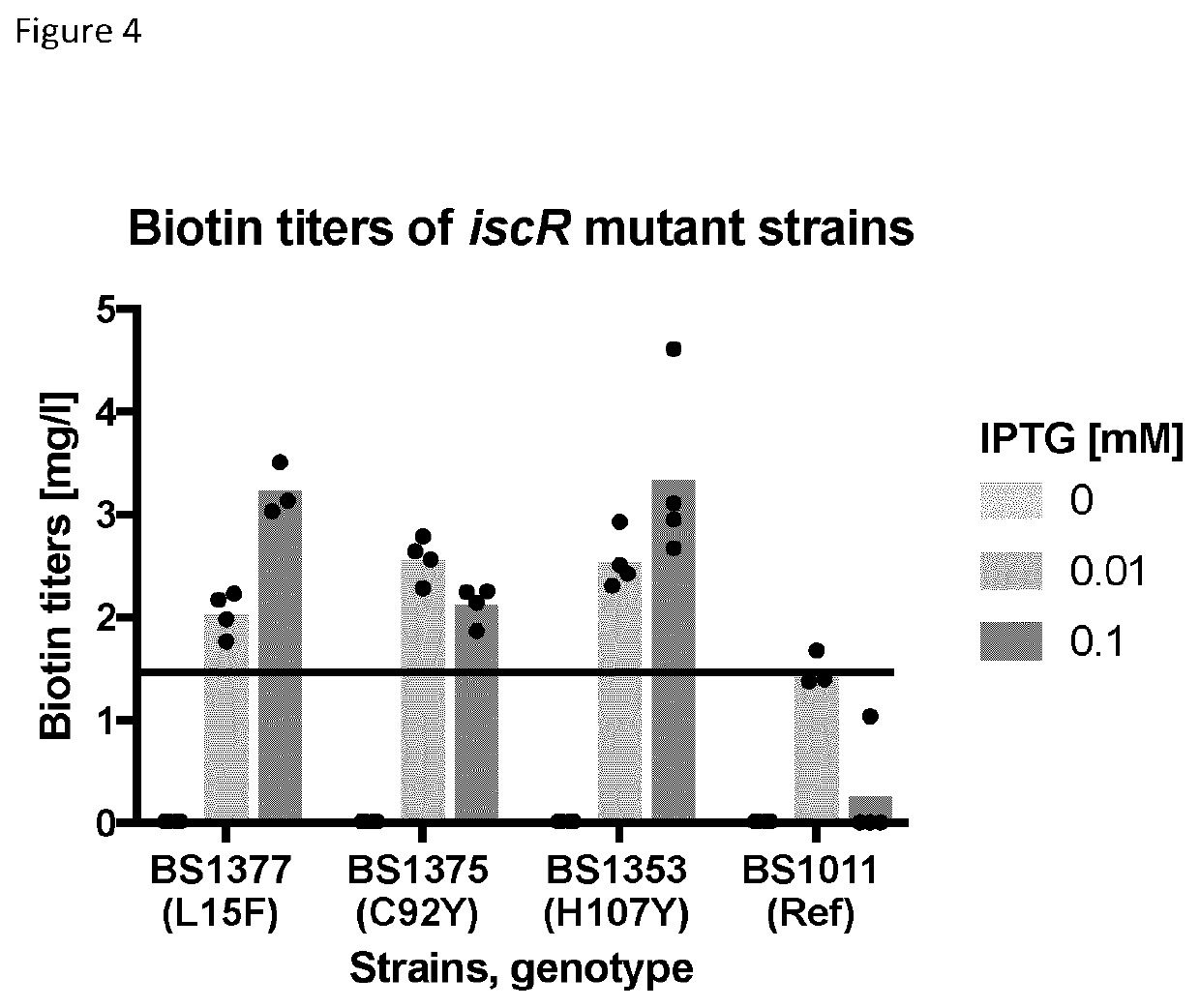Cell factories for improved production of compounds and proteins dependent on iron sulfur clusters
a technology of iron sulfur clusters and cell factories, applied in biochemistry apparatus and processes, isomerases, enzymes, etc., can solve the problems of high cost of chemical synthesis
- Summary
- Abstract
- Description
- Claims
- Application Information
AI Technical Summary
Benefits of technology
Problems solved by technology
Method used
Image
Examples
first embodiment
[0084] the invention provides a genetically modified prokaryotic cell comprises a genetically modified iscR gene encoding a mutant IscR, as well as either at least one transgene, or at least one endogenous gene operably linked to a genetically modified regulatory sequence capable of enhancing expression of said endogenous gene (herein called an upregulated endogenous gene); wherein the transgene or endogenous gene encodes any Fe—S cluster polypeptide excluding biotin synthase (EC: 2.8.1.6), lipoic acid synthase (EC: 2.8.1.8), HMP-P synthase (EC: 4.1.99.17), and tyrosine lyase (EC: 4.1.99.19).
[0085]The mutant IscR polypeptide is derived from a wild-type member of a family of IscR polypeptides, whereby the mutant IscR is characterized by an amino acid sequence comprising at least one amino acid substitution when compared to its wild-type parent IscR polypeptide; and as a consequence of said at least one substitution the mutants IscR polypeptide, when expressed in a genetically modifie...
example 1
Identification and Characterization of Genetically Modified E. coli Strains Capable of Enhanced Biotin Production
[0251]1.01: The Following Strains of Escherichia coli Used in the Examples are Listed Below.
TABLE 1StrainsNameDescriptionBS1013E. coli K-12 BW25113 parent strain having genotype:rrnB3 ΔlacZ4787 hsdR514 Δ(araBAD)567 Δ(rhaBAD)568 rph-1BS1011ΔbioB 1(JW0758-1) derived from E. coli K-12 BW25113BS1353BS1011 derivative comprising a H107Y mutation in iscRBS1113BS1011 derivative comprising pBS412 plasmid giving IPTG - inducibleBioB expressionBS1375BS1011 derivative comprising a C92Y mutation in iscRBS1377BS1011 derivative comprising a L15F mutation in iscR1Nucleotide sequence of ΔbioB gene prior to deletion was SEQ ID No. 33
1.02: The Following Plasmids Used in the Examples are Listed Below.
[0252]
TABLE 2PlasmidsNameDescriptionpBS412BioB [SEQ ID No: 34] overexpression plasmid (kanR, SC101) from a T5 lacOrepressed promoter [SEQ ID No.: 37]pBS430pBS412 with frame shift mutation early ...
example 2
Example 2 Overexpression of a Flavodoxin / Ferredoxin Reductase (Fpr) and Flavodoxin (FldA) Reduction System to Increase Productivity of Genetically Modified E. coli Strains Capable of Producing Biotin
[0268]2.01: The Following Strains of Escherichia coli Used in the Examples are Listed Below.
TABLE 4StrainsNameDescriptionBS1011ΔbioB (JW0758-1) derivative of E. coli K-12 BW25113 parent strain havinggenotype: rrnB3 ΔlacZ4787 hsdR514 Δ(araBAD)567 Δ(rhaBAD)568 rph-1BS1353BS1011 derivative comprising a H107Y mutation in iscRBS1615BS1011 derivative with additional deletion of ΔbioAFCDBS1937BS1615 derivative comprising pBS679 plasmid giving IPTG - inducible BioBexpressionBS2185BS1615 derivative comprising pBS679 plasmid giving IPTG - inducible BioBexpression and pBS1112 giving constitutive FldA-Fpr expressionBS2707BS1615 derivative comprising pBS679 plasmid giving IPTG - inducible BioBexpression and pBS1054 giving constitutive GFP expression
The following plasmids used in the example are liste...
PUM
| Property | Measurement | Unit |
|---|---|---|
| concentrations | aaaaa | aaaaa |
| wavelength range | aaaaa | aaaaa |
| wavelength range | aaaaa | aaaaa |
Abstract
Description
Claims
Application Information
 Login to View More
Login to View More - R&D
- Intellectual Property
- Life Sciences
- Materials
- Tech Scout
- Unparalleled Data Quality
- Higher Quality Content
- 60% Fewer Hallucinations
Browse by: Latest US Patents, China's latest patents, Technical Efficacy Thesaurus, Application Domain, Technology Topic, Popular Technical Reports.
© 2025 PatSnap. All rights reserved.Legal|Privacy policy|Modern Slavery Act Transparency Statement|Sitemap|About US| Contact US: help@patsnap.com



